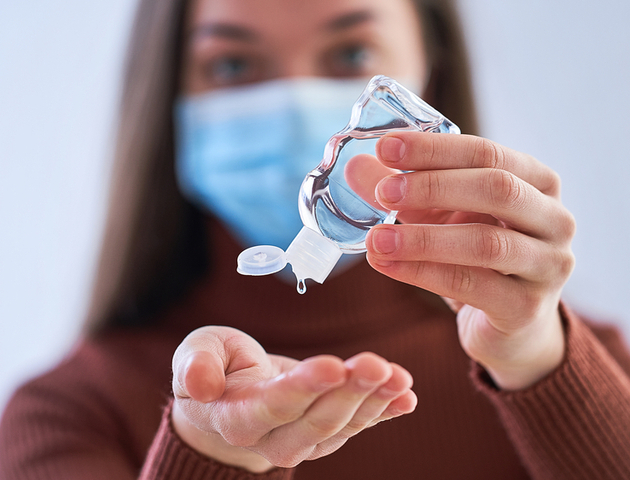
What are respiratory infections?
Respiratory infections are those infections that occur in the lungs, chest, sinuses, nose and throat. Some of the symptoms of respiratory infections are cough, congestion, sore throat, headache, fever.
How does a respiratory infection spread?
Most of us may not know this interesting fact that many of the respiratory infectious germs can easily be transmitted from one person to another:
– by breathing in respiratory droplets from another person during coughing or sneezing.
– by touching nose, mouth or eyes after being in contact with someone who has a respiratory infection
– by touching another object that is exposed to the virus via respiratory droplets
How to prevent the spread of respiratory infections?
The best preventive method is to avoid contact with droplets by following these simple steps:
1. Practice frequent hand washing: Wash your hands frequently with soap and water. It is advisable to wash your hands even if they are visibly clean as most of the germs are microscopic and are not visible to naked eyes.
Tip: Don’t rush and wash it properly for at least 20 seconds as recommended by the World Health Organization.
2. Sanitize your hands frequently: There may be situations where handwashing may not be possible, especially while you are out somewhere. Therefore, for times like these, it is recommended that you should always carry a hand sanitizer with you.
Tip: Always use hand sanitizer with more than 70% alcohol. Make sure while using sanitizer you rub all surfaces of your hands & fingers properly until they become dry as recommended by the Center for Disease Control and Prevention.
3. Avoid touching frequently-touched surfaces: To prevent the spread of the viruses, you should avoid directly touching surfaces like lift buttons, staircase railing, and door knobs/handles, etc., as infectious germs may persist on these surfaces for a few hours or more and may act as a source of infection.
Tip: You can use your knuckle or elbow whenever possible and also try and use your non-dominant hand e.g. right-handed person should use his left hand to push buttons or rotate knobs. You are less likely to touch your face with your non-dominant hand.
4. Don’t touch your face regularly: We all have a habit of touching our nose, eyes or face throughout the day. You should try and abstain from doing so as our hands may touch several infection-exposed surfaces throughout the day, which in turn increases the risk of infection.
Tip: If at any point in time you feel the urge to touch your face, just stretch your arms.
5. Precautions for the new “normal”
– If you are wearing a mask or a pair of gloves whenever you step outside, you should take care of a few things:
– Avoid touching the front of the mask & outer portion of gloves as they may be contaminated.
– If you are outside and want to take off your mask for lunch or before using the washroom, you can keep it separately in a clean plastic pouch.
6. Cleaning & Disinfection
Regular cleaning & disinfecting of common surfaces at home can help prevent the spread of any bacteria or virus as it almost ensures the removal of any infectious droplet that may be present on the surface.
But the important thing is to know which surface requires what kind of disinfectant. Let us have a look at the type of surfaces and the kind of disinfectant that should be used:
a) Hard (non-porous) small surface
Examples are: Thermometer, Phone
Which disinfectant to use: You can use disinfectant wipes with 70% or more ethyl or isopropyl alcohol as mentioned by CDC.
b) Hard (non-porous) large surface
Examples are: Tables, handles, doorknobs
Recommendation: Household bleach solution with 1/3 cup of bleach added to 1 gallon of water, or 70% alcohol solutions.
c) Soft (porous)
Examples are: Clothes, bed sheets, pillow covers
Recommendation: It is advisable to wash in warm water with common household detergent and dry completely under sunlight.
Bottom line
It is imperative to take proper precautions and preventive measures mentioned above in order to prevent the spread of respiratory infections and protect yourself as well as others from the COVID-19 pandemic.
Take care; stay safe!
Disclaimer: This initiative, which is bought to you by 1mg Technologies Pvt. Ltd. (“1mg”) and Lizol, a trademark owned by Reckitt Benckiser Inc (“RB”) is for public awareness only. This should not be considered to be a medical advice and/or a substitute to a physician’s advice. The views and opinions expressed by the participating physicians are their independent professional judgement in collaboration with 1mg. RB does not claim any responsibility for the accuracy of their views. Please ensure that you consult your physician for further clarity.
References
1. Chronic Respiratory Illnesses. National Jewish Health. https://www.nationaljewish.org/conditions/chronic-respiratory-
infections#:~:text=Respiratory%20infections%20are%20infections%20that,time%20indo
ors%20and%20in%20groups
2. When and How to Wash Your Hands. Centers for Disease Control and Prevention. https://www.cdc.gov/handwashing/when-how-handwashing.html
3. Advisory & Manual on use of Homemade Protective Cover for Face & Mouth. Ministry of Health and Family Welfare. https://www.mohfw.gov.in/pdf/Advisory&ManualonuseofHomemadeProtectiveCoverforFace&Mouth.pdf
4.Cleaning and Disinfection for Households. Centers for Disease Control and Prevention. https://www.cdc.gov/coronavirus/2019-ncov/prevent-getting-sick/cleaning-disinfection.html
5. Guidelines for disinfection of quarantine facility (for COVID-19). National Center for Disease Control. https://ncdc.gov.in/WriteReadData/l892s/89168637271584172711.pdf
6. How to Sanitize Your Phone and Other Devices. Federal Communications Commission. https://www.fcc.gov/consumers/guides/how-sanitize-your-phone-and-other-devices
7. Guidance for Cleaning and Disinfecting Public Spaces, Workplaces, Businesses, Schools, and Homes. Environmental Protection Agency. https://www.epa.gov/sites/production/files/2020-04/documents/316485-c_reopeningamerica_guidance_4.19_6pm.pdf